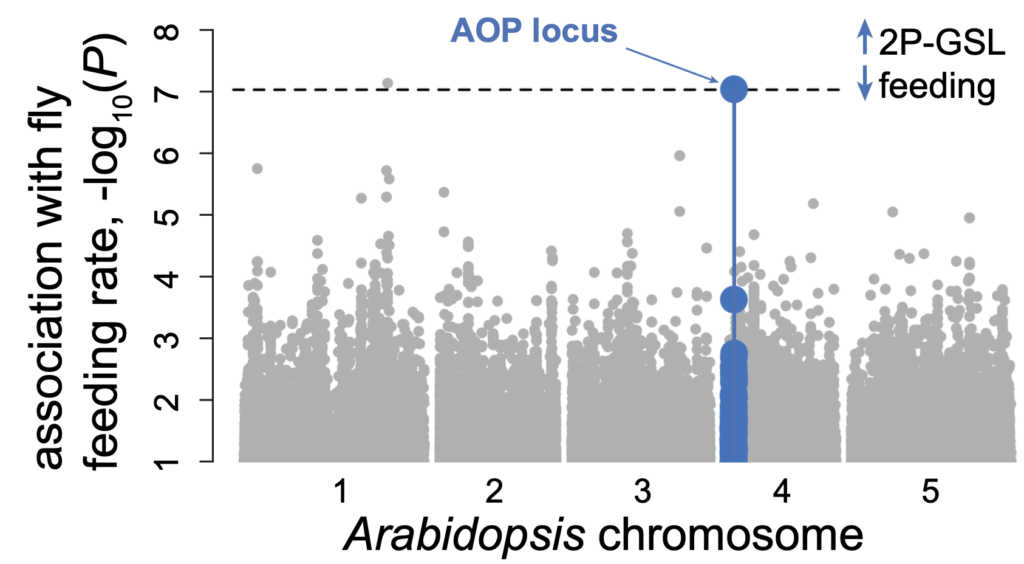Evolutionary theory proposes that the vast diversity of insects and plants arises from the antagonistic interactions between these two groups of organisms, as plants evolve ways to defend themselves and insects evolve ways to overcome these defenses. We seek to understand the ecological and evolutionary processes shaping this diversity by linking genetic variation at insect and plant genes to genotype-dependent effects on plant-herbivore interactions (e.g., insect host choice and growth, or plant resistance to herbivory).
Our approaches in this area range from genome-wide association mapping of plant and insect traits that shape plant-insect interactions, to paring experimental evolution with genome sequencing (“evolve and resequencing” studies). Our primary goal is to test conceptual models of how genetic trade-offs maintain genetic variation in insect herbivores and their host plants. Advances in genome sequencing, statistical genetics, and computing with large datasets are now enabling genome-scale tests of foundational evolutionary models developed over the past century. It’s an exciting time to study species interactions!

Above: Results of a genome-wide association study (GWAS) for feeding rate of an herbivorous Scaptomyza species (S. flava) on one of its host plants, Arabidopsis thaliana. When adult female flies were allowed to choose between hundreds of natural Arabidopsis genotypes, the major determinant of how much damage a plant incurred was the plant’s genotype at the AOP locus. Genes at this locus alter the profile of a specific class of defensive toxins (glucosinolates) in Arabidopsis leaves, and genotypes that produce more of the compound 2-propenyl glucosinolate incurred lower amounts of fly feeding. Intriguingly, we found the effects of particular glucosinolates on feeding rate differ depending on the species of Scaptomyza being tested, and that some of these toxins act as attractants in a species-dependent manner. We hypothesize that interactions with glucosinolates, which vary in their chemical composition between plant species, played a major role as herbivorous Scaptomyza diversified into new species that feed upon different host plants. Stay tuned as we dissect how the ability to sense and resist these plant defensive toxins has evolved and shaped the feeding ecology of Scaptomyza flies during and after the transition to herbivory!